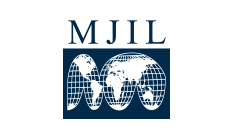Abstract
Within the United Nations (UN) human rights system, there are ten human rights treaties, each with its own treaty body or “Committee” that claims to offer the most authoritative interpretation of its corresponding treaty. Rather than resolving contests for primacy, this arrangement often generates conflicting interpretations of certain human rights.
This Article is the first to shed light on conflicts between treaty bodies’ interpretations within the UN human rights system and to confront the question of how to resolve such conflicts at the intersections of international human rights law. The Article analyzes three case studies of such conflicts: 1) clashing interpretations relating to a child’s right to live with a family; 2) the right to life, reproductive access, and disability-selective abortion; 3) and involuntary detention and the right to liberty and security. These conflicts of interpretation matter to individuals seeking clarification of potential legal claims, as well as to legislators and regulators seeking to draft legislation to comply, or to evade compliance, with human rights standards.
This Article then argues that secondary rules of interpretation are unlikely to resolve these conflicts, as they avoid necessary contests of meaning. Even with the uncertainties that enduring conflicts create, they are preferable to rules of resolution favoring uniformity and systemic integration, as the related risk is either the hegemonic elevation of majoritarian interests or the elevation of possibly biased perspectives. This Article thus proposes pragmatic institutional design tools to promote dialogue and engage each conflict in a context-specific fashion. Mitigating the conflicts between treaties in this way will help optimize the object of all international human rights law treaties.
Recommended Citation
C. C. True-Frost,
Listening to Dissonance at the Intersections of International Human Rights Law,
43
Mich. J. Int'l L.
361
(2022).
Available at:
https://repository.law.umich.edu/mjil/vol43/iss2/4

